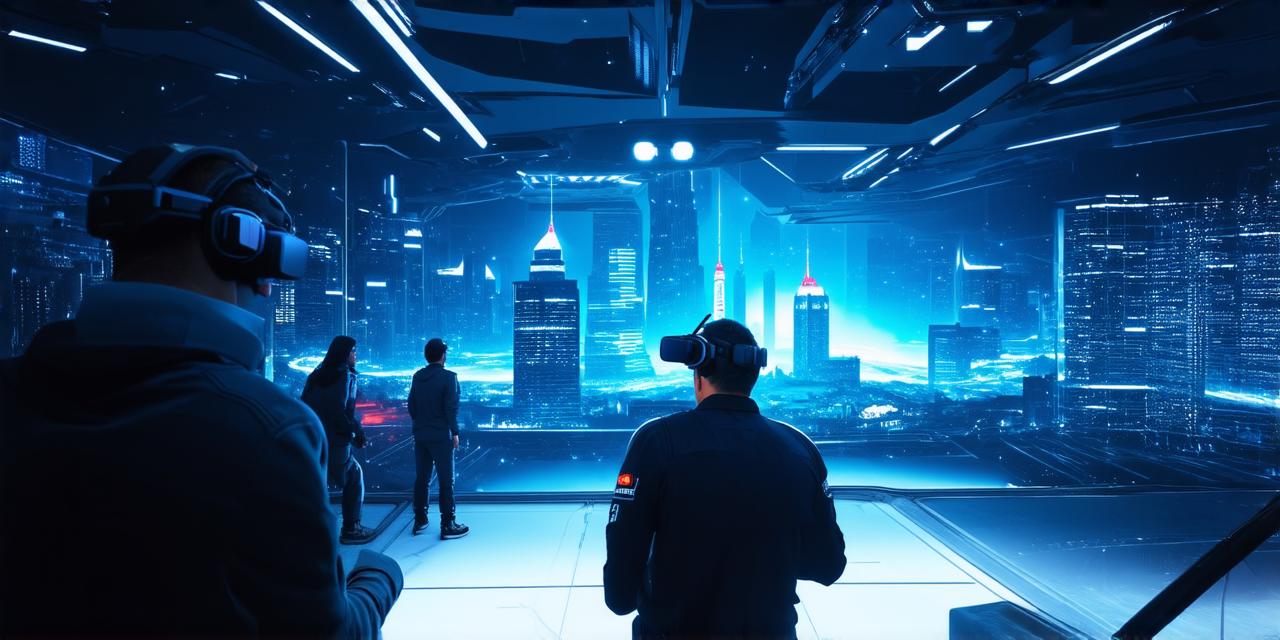History of Virtual Reality Games
Virtual reality technology dates back to the 1960s when researchers developed head-mounted displays (HMDs) to simulate a 3D environment. However, it wasn’t until the 1990s that VR games started gaining popularity with the release of Nintendo’s Virtual Boy and Sega’s Genesis 32X.
Since then, VR has evolved rapidly, with advancements in hardware and software leading to a more immersive experience for players. Today, VR games are used in various fields such as entertainment, education, and training, among others.
Applications of Virtual Reality Games
Virtual reality games have numerous applications across different industries. In the gaming industry, VR games offer an unparalleled immersive experience that can transport players to entirely new worlds. Players can interact with these virtual environments in a way that is not possible in traditional 2D games.
Technologies Used in Virtual Reality Games
Head-mounted displays (HMDs): HMDs are worn on the head and display a 3D image that mimics the player’s perspective.
Motion tracking: This technology uses sensors to track the movement of the player’s body and translate it into in-game actions.
Controllers: These devices allow players to interact with virtual environments by simulating hand movements and gestures.
Graphics processing units (GPUs): GPUs are responsible for rendering high-quality graphics and creating a smooth gameplay experience.
Haptic feedback: This technology provides tactile feedback to the player, allowing them to feel sensations in virtual environments.
Best Practices for Creating Virtual Reality Games
Creating VR games is a complex process that requires careful planning and execution. Here are some best practices to consider when creating VR games:
- Keep it simple: VR games should be intuitive and easy to navigate, as players may feel disoriented in virtual environments.
- Focus on the user experience (UX): The UX should be seamless and enjoyable, with minimal lag or distractions.
- Optimize for performance: VR games require high-performance hardware, so optimizing for performance is crucial to ensure a smooth gameplay experience.
- Test thoroughly: Thoroughly testing VR games in various environments and on different devices is essential to identify and fix any bugs or issues that may arise.
- Consider accessibility: VR games should be designed with accessibility in mind, allowing players with disabilities to participate fully.
Case Studies of Successful Virtual Reality Games
Several virtual reality games have achieved immense success, including:
- Beats Saber: A rhythm game that uses VR controllers to simulate drumming, Beats Saber has become a cultural phenomenon and won multiple awards.
- Job Simulator: A simulation game that allows players to experience various jobs in virtual environments, Job Simulator has been praised for its immersive and educational experience.
- Tilt Brush: A painting game that uses VR controllers to simulate brushes and paints, Tilt Brush has become a popular tool among artists and art enthusiasts.
Comparing Virtual Reality Games with Traditional 2D Games
Virtual reality games offer several advantages over traditional 2D games, including:
- Immersive experience: VR games transport players to entirely new worlds, providing a level of immersion that is not possible in 2D games.
- Interactivity: Players can interact with virtual environments in a way that is not possible in 2D games, making the gameplay experience more engaging and enjoyable.
- Realism: VR games offer a high level of realism, allowing players to experience things that may be difficult or impossible to achieve in real life.
- New forms of storytelling: Virtual reality games provide new opportunities for storytelling, as they can create complex and interactive narratives that are not possible in 2D games.
FAQs about Virtual Reality Games
What is virtual reality? Virtual reality is a computer-generated simulation of a 3D environment that can be interacted with using specialized devices such as head-mounted displays and controllers.
How do virtual reality games work? Virtual reality games use advanced technologies such as motion tracking, graphics processing units, and haptic feedback to create an immersive experience for players.
What are the best practices for creating virtual reality games? Best practices for creating virtual reality games include keeping it simple, focusing on the user experience, optimizing for performance, thoroughly testing, and considering accessibility.
Are virtual reality games better than traditional 2D games? Virtual reality games offer several advantages over traditional 2D games, including a more immersive experience, interactivity, realism, and new forms of storytelling. However, the preference for one type of game over the other ultimately depends on personal taste.
What are some examples of successful virtual reality games? Some examples of successful virtual reality games include Beats Saber, Job Simulator, and Tilt Brush.
Can virtual reality games be played on regular TVs? Virtual reality games require specialized devices such as head-mounted displays and controllers, so they cannot be played on regular TVs.
Are virtual reality games only for gaming? Virtual reality games have numerous applications across different industries, including entertainment, education, training, and tourism, among others.
Summary
Virtual reality games are an exciting and rapidly evolving field that offers a unique and immersive experience for players. Understanding the basics of VR game development is essential to create engaging and innovative games that can captivate audiences. As technology continues to advance, we can expect virtual reality games to become even more advanced and immersive in the future. Whether you are a seasoned gamer or just starting out, virtual reality games offer a new frontier of gaming that is definitely worth exploring.

